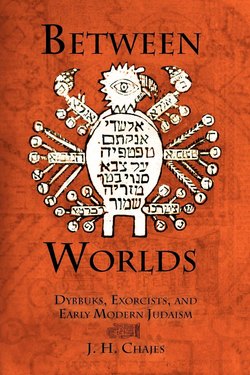Between Worlds

Описание книги
After a nearly two-thousand-year interlude, and just as Christian Europe was in the throes of the great Witch Hunt and what historians have referred to as «The Age of the Demoniac,» accounts of spirit possession began to proliferate in the Jewish world. Concentrated at first in the Near East but spreading rapidly westward, spirit possession, both benevolent and malevolent, emerged as perhaps the most characteristic form of religiosity in early modern Jewish society. Adopting a comparative historical approach, J. H. Chajes uncovers this strain of Jewish belief to which scant attention has been paid. Informed by recent research in historical anthropology, Between Worlds provides fascinating descriptions of the cases of possession as well as analysis of the magical techniques deployed by rabbinic exorcists to expel the ghostly intruders. Seeking to understand the phenomenon of spirit possession in its full complexity, Chajes delves into its ideational framework—chiefly the doctrine of reincarnation—while exploring its relation to contemporary Christian and Islamic analogues. Regarding spirit possession as a form of religious expression open to—and even dominated by—women, Chajes initiates a major reassessment of women in the history of Jewish mysticism. In a concluding section he examines the reception history of the great Hebrew accounts of spirit possession, focusing on the deployment of these «ghost stories» in the battle against incipient skepticism in the turbulent Jewish community of seventeenth-century Amsterdam. Exploring a phenomenon that bridged learned and ignorant, rich and poor, men and women, Jews and Gentiles, Between Worlds maps for the first time a prominent feature of the early modern Jewish religious landscape, as quotidian as it was portentous: the nexus of the living and the dead.
Отрывок из книги
Between Worlds
Published in association with the Center for Advanced Judaic Studies of the University of Pennsylvania
.....
The yiḥud is thus a meditative practice that promises to grant the practitioner clairvoyant contact with the dead and, moreover, to cleave to them in spiritual ecstasy. The yiḥud awakens the dead and allows the practitioner to ascend through the energy of his devotion while simultaneously drawing down enlightenment from above. The practitioner-driven devotion is characterized here by the kabbalistic term Female Waters, understood as the spiritual arousal and “lubrication” of the practitioner that stimulates the divine partner and calls forth the shower of divine effusion, itself called “Male Waters” in the literature.
In this mystical circle, necromantic techniques such as graveside prostration were not always required to bring about the impregnation of the soul of a departed saint into the body of a living counterpart. Elsewhere in his mystical diary, Vital relates that there were times when he heard voices speaking to him, which he did not know with certainty to be those of visiting transmigrants. He even suspected the voices to be his own. In doubt, he consulted a Damascene sorcerer, who in turn summoned a demonic spirit to appear in a looking glass, in order to respond to Vital’s query. “He answered me,” writes Vital, “He [the ‘ibbur] is the speaker, and not me. For his soul enclothes itself in my heart, and from there he raises the sound of his words to my mouth and he speaks with my mouth, and then I hear.”57
.....
